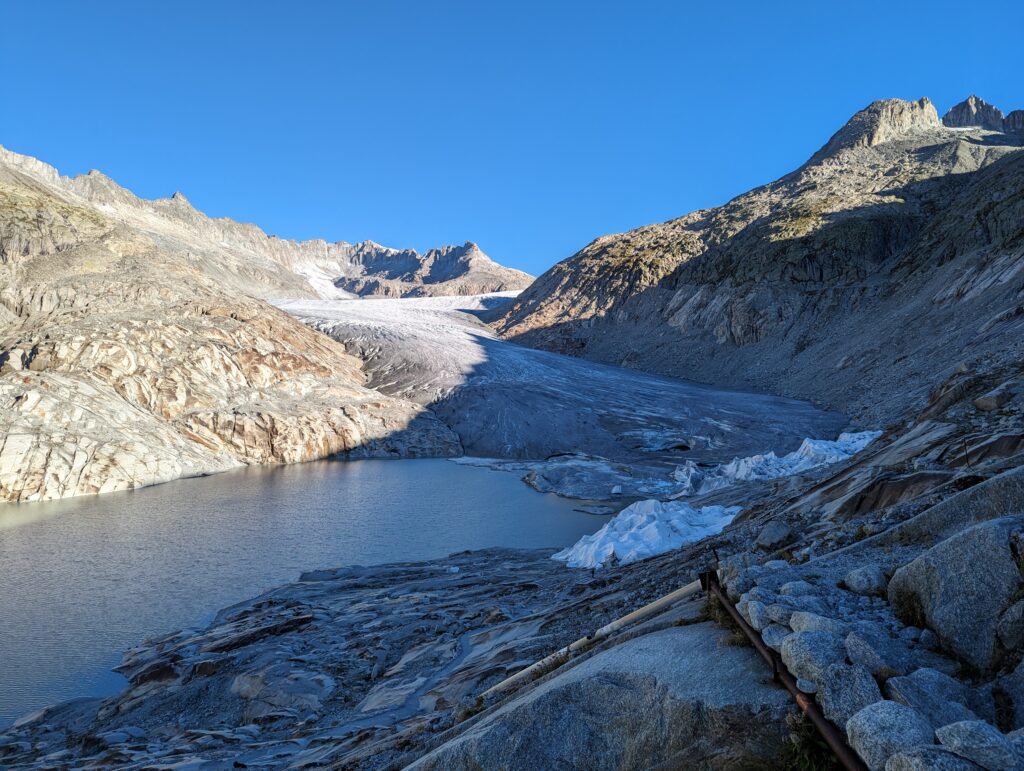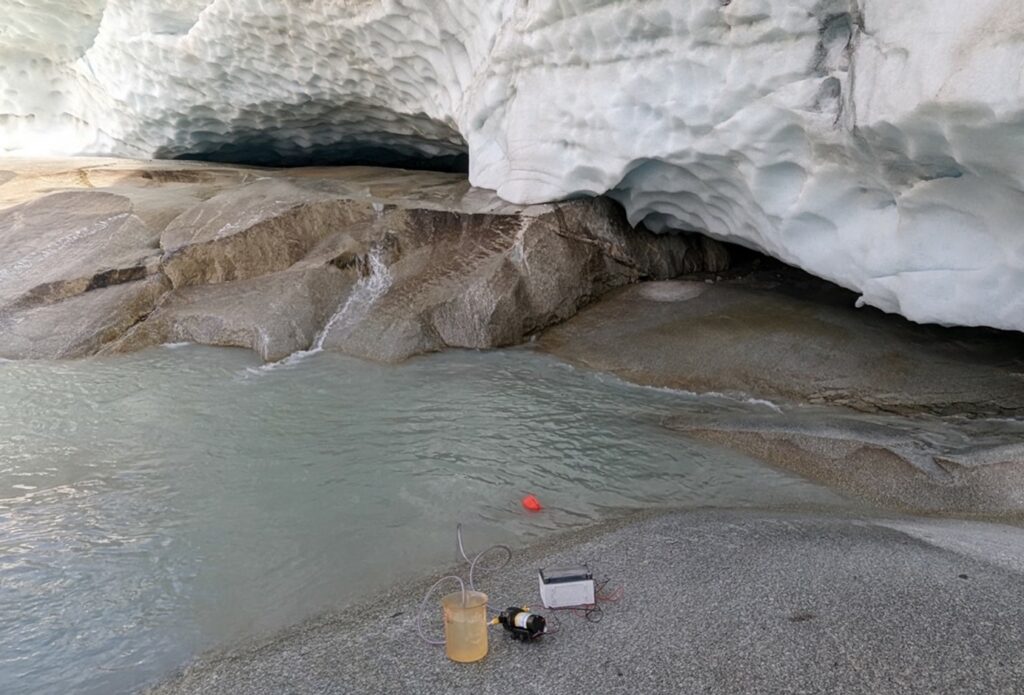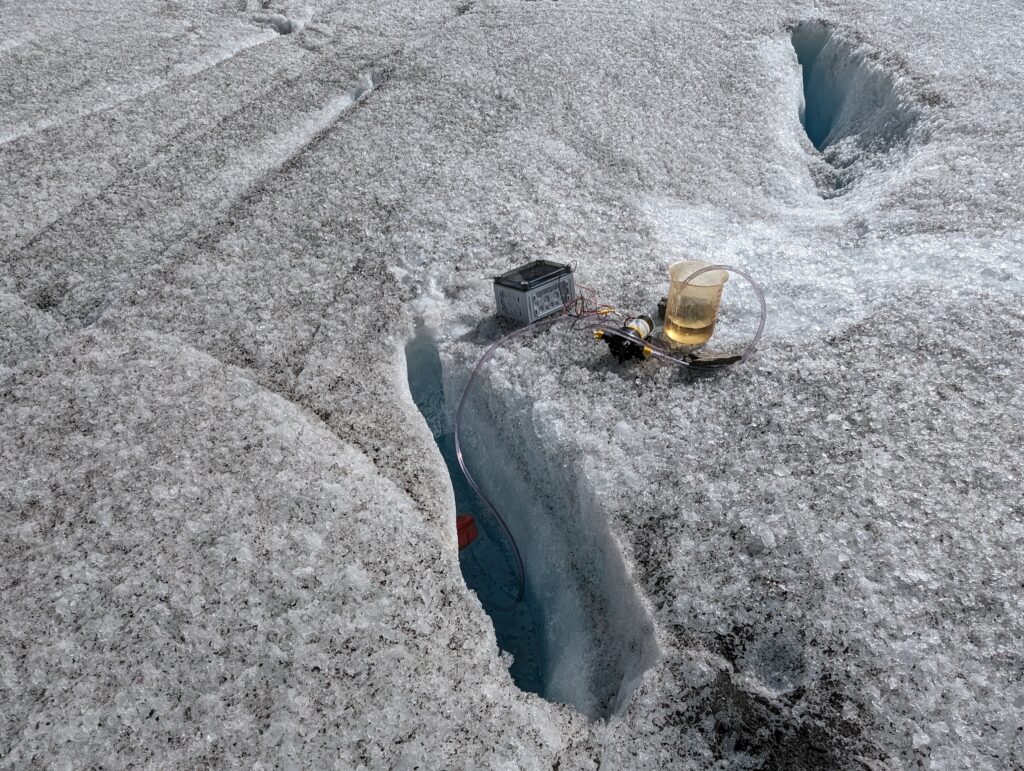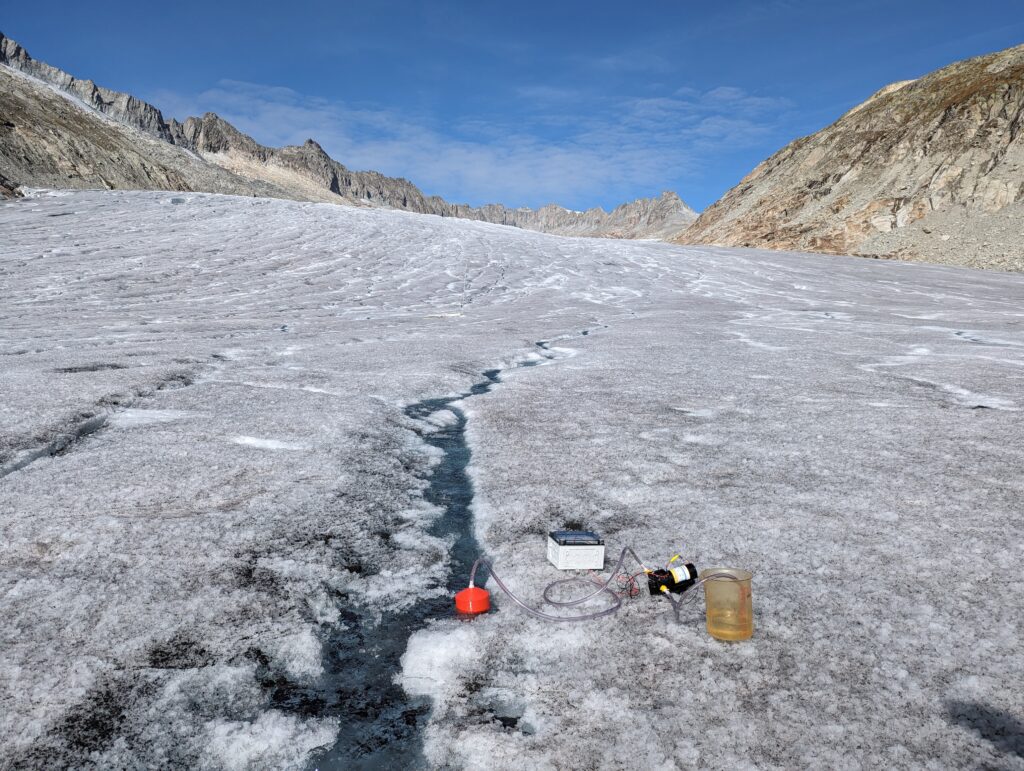Glaciers are melting. This is especially true in the Alpine region, which is one of the areas experiencing the fastest rates of ice melting worldwide. As a consequence of global warming, combined with a higher input of water into the outflow system, more organisms are being released into the outflow environments. To unravel the many unknowns associated with the microbial dynamics of their transit through the glaciers, we collected samples from the glacial medium where the glacial microorganisms are most active: the glacial water.
Our field season took place during late summer 2023. Our destination: the Rhone Glacier. Getting there was easy, less than a 2-hour drive from WSL. Once we exited the motorway, the drive became astounding, ascending the mountains and reaching the Furkapass, offering stunning views of glaciers all around. On each day we sampled, we left early in the morning. We met at WSL to finish packing everything, checked several times to ensure we had everything (you definitely don’t want to get there and find out something is missing), and with quite heavy backpacks, we set off for the Rhone Glacier.

Once we reached the Rhone Glacier, we finished organising our backpacks. We usually stopped for a chat with the lady at the Ice Cave Souvenir shop, where the entrance to the hiking trail is, discussing our research project and our plans for the day on the glacier. It was great to share osbervations and insights with the locals, as they witness firsthand the rapid melting of the Rhone Glacier. Then, up we went, crossing the moraine in our boots. After passing the ice cave, we strapped on our crampons as we began our glacier walk.
Walking on glaciers when the weather is sunny, especially during this season when the snow has completely melted making it less dangerous to walk, is fun. Glaciers are incredibly impressive environments. They appear solid and immutable from afar, but you realise their dynamism the moment you set foot on them: there’s so much water on them, and it’s very easy to see how much they change each time you return.
We didn’t have to walk far for our first sampling site because we always started from the subglacial water – water exiting the glacier from its edge after its transit through the glacier. Each sampling session would last approximately one hour. Water filtration is slow, especially with the subglacial water, where there is a lot of glacial flour (i.e. fine glacial sediment created by the water flow beneath the glacier).

We then continued our glacial hike up to the glacial ablation area where we searched for the most accessible supraglacial ponds and streams to filter more glacial water. Sampling this water was pivotal as the microbial communities on the glacial surface are very different from those sampled from the subglacial water. Different nutrient, hydrological, and light conditions drastically shape these communities.
All our fieldtrips were a resounding success! While there were moments of waiting, we filled them with delightful glacial wanders, enjoying snacks, and fine-tuning our equipment.


At the end of each day, we would put all samples at -80°C before heading back to WSL (usually after a brief but very important stop at the Alpkäserei Galenstock Alp to get some delicious cheese) to celebrate another successful day in the field.
Dr. Andreas Bauder and Bear Stierli have been great companions during this sampling seasons. Without their expertise on glacial walks and field sampling, none of this would have been possible.
Gilda Varliero is a postdoctoral researcher at Swiss Federal Institute for Forest, Snow and Landscape Research WSL in Birmensdorf, Switzerland. Her fieldtrip took place in summer 2023 with financial support of a SPI Technogrant.
- Read more about Gilda Varliero’s project